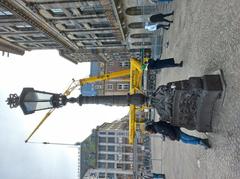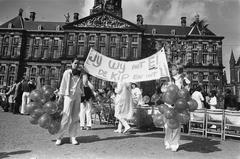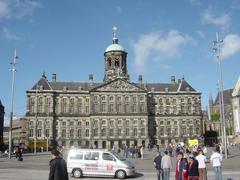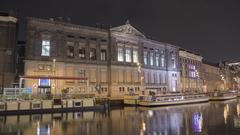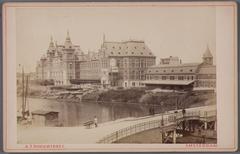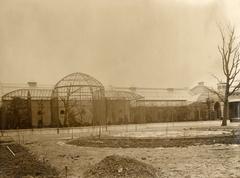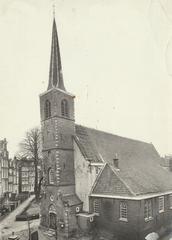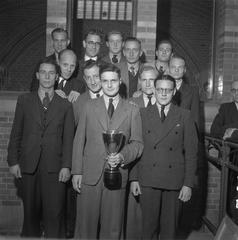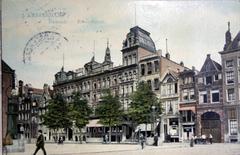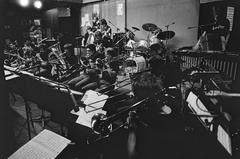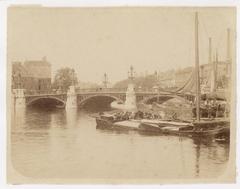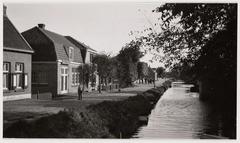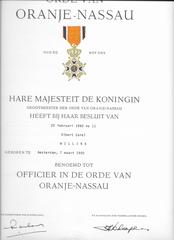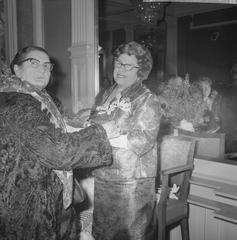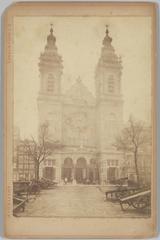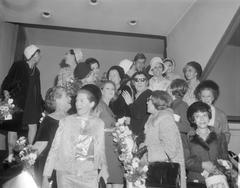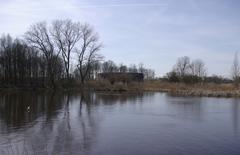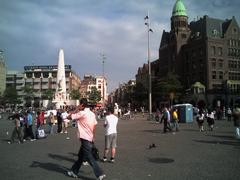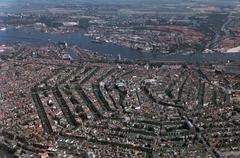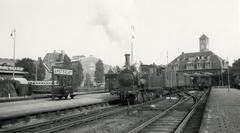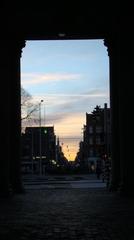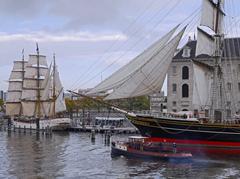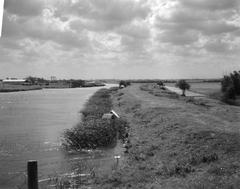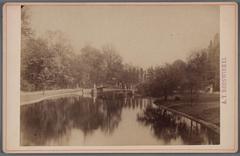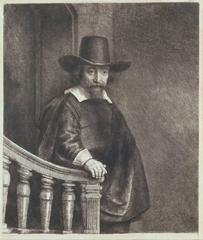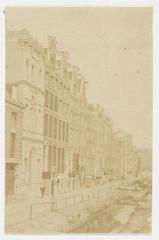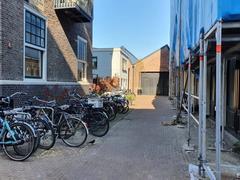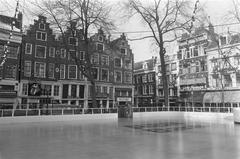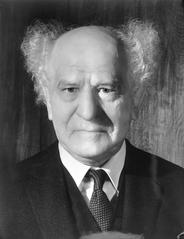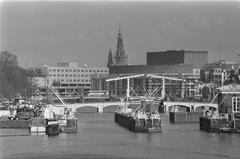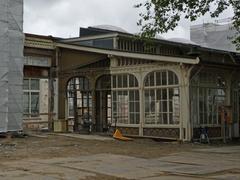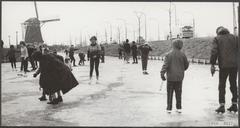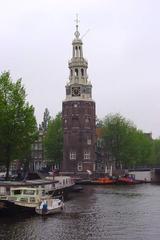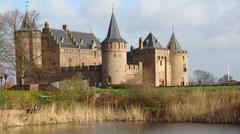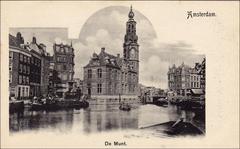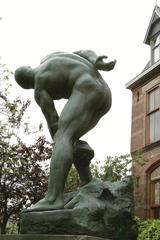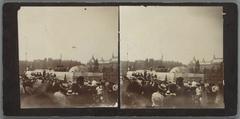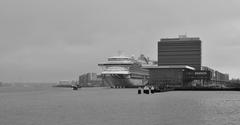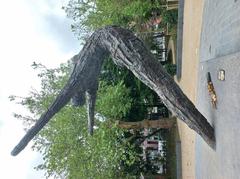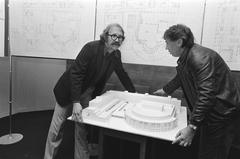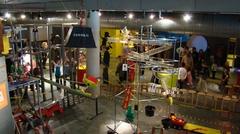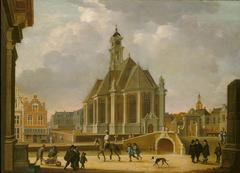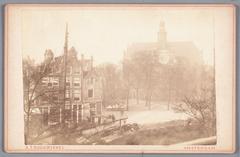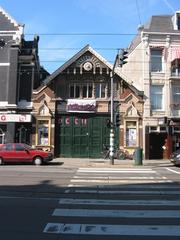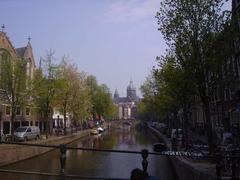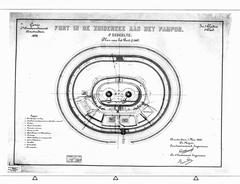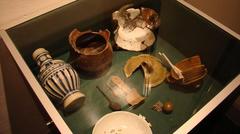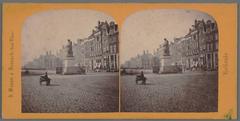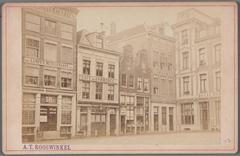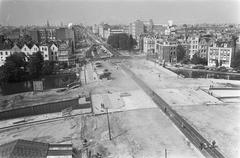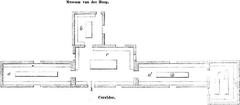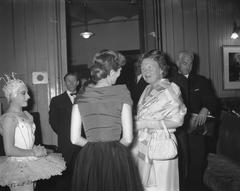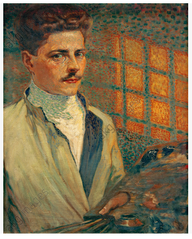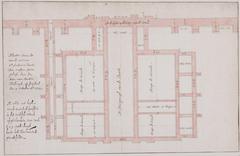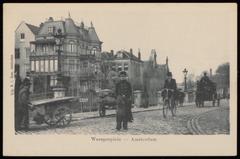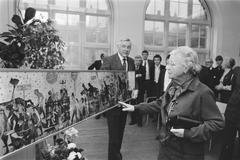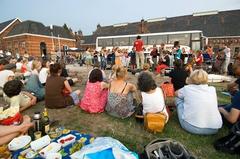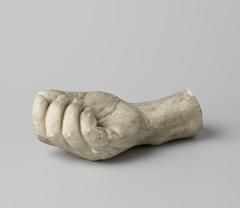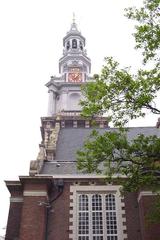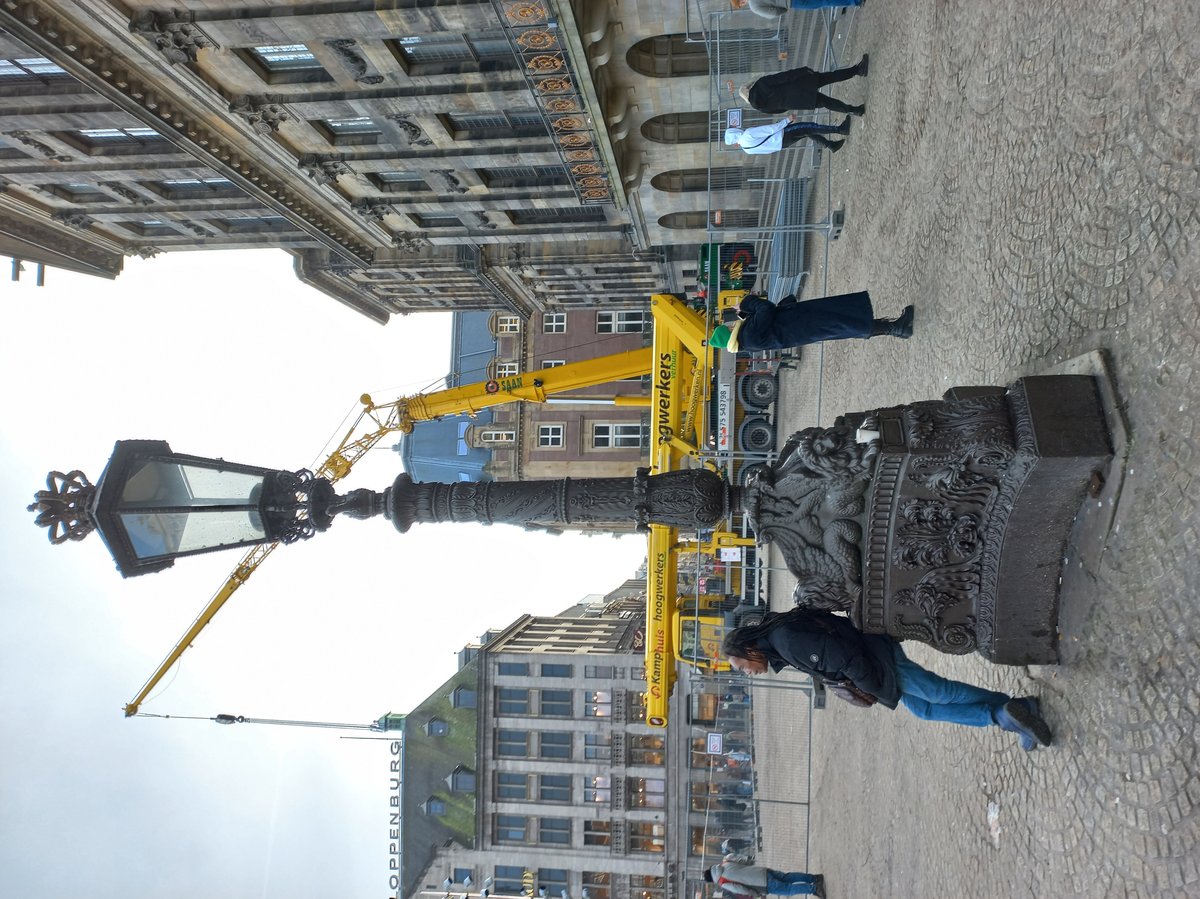
Complete Guide to Visiting Koninklijk Paleis in Amsterdam
Publication Date: 17/07/2024
Introduction to Koninklijk Paleis
Steeped in grandeur and historical significance, the Koninklijk Paleis, or Royal Palace of Amsterdam, is a must-visit destination for anyone exploring the cultural and architectural wonders of the Netherlands. Situated in the heart of Amsterdam on Dam Square, this iconic landmark has a rich history that spans several centuries. Originally constructed as the Town Hall of Amsterdam during the Dutch Golden Age, it was later transformed into a royal residence by King Louis Bonaparte in the early 19th century. Today, the palace serves multiple functions: it is a working palace used for official state functions and ceremonies, as well as a public museum that invites visitors to delve into its opulent interiors and extensive art collections. This comprehensive guide will provide detailed information on the history, architectural marvels, visiting hours, ticket prices, and practical tips for making the most out of your visit to the Koninklijk Paleis. Whether you’re a history enthusiast, an art lover, or a curious traveler, the Royal Palace offers a captivating glimpse into the cultural heritage of Amsterdam (Amsterdam.info, Rijksmuseum, Koninklijk Paleis Amsterdam).
Contents Overview
- Introduction
- Early Beginnings and Construction
- Architectural Significance
- Transition to Royal Residence
- Restoration and Preservation
- Role in Modern Times
- Notable Events and Ceremonies
- Art and Cultural Heritage
- Visitor Information
- Hours
- Tickets
- Accessibility
- Nearby Attractions and Travel Tips
- FAQs
- Conclusion
Early Beginnings and Construction
The Koninklijk Paleis originally began as the Town Hall of Amsterdam. The construction of this monumental building commenced in 1648, during the Dutch Golden Age, a period marked by immense wealth and cultural achievements in the Netherlands. The architect Jacob van Campen was commissioned to design the building, which was intended to symbolize the prosperity and power of Amsterdam. The construction was completed in 1665, and the building was inaugurated as the Town Hall on July 29, 1655 (Amsterdam.info).
Architectural Significance
The design of the Koninklijk Paleis is a prime example of Dutch Classicism, characterized by its symmetry, grandeur, and use of classical elements. Van Campen drew inspiration from Roman architecture, particularly the works of Vitruvius and Palladio. The building’s exterior is adorned with sculptures and reliefs that depict various allegorical figures and scenes, emphasizing themes of justice, wisdom, and prosperity. The central hall, known as the Burgerzaal or Citizens’ Hall, is particularly noteworthy for its vast marble floor and impressive ceiling paintings (Rijksmuseum).
Transition to Royal Residence
The transformation of the Town Hall into a royal palace occurred during the Napoleonic era. In 1806, Louis Bonaparte, the brother of Napoleon Bonaparte, was installed as the King of Holland. He chose the Town Hall as his royal residence, necessitating significant renovations to accommodate its new function. The building was lavishly redecorated in the Empire style, with opulent furnishings and decorations befitting a royal palace. After the fall of Napoleon, the building continued to serve as a royal residence for the Dutch monarchy (Koninklijk Paleis Amsterdam).
Restoration and Preservation
Over the centuries, the Koninklijk Paleis has undergone numerous restorations to preserve its historical and architectural integrity. One of the most significant restoration projects took place in the late 20th century, from 2005 to 2009. This extensive renovation aimed to restore the palace to its former glory, addressing structural issues, updating electrical systems, and meticulously conserving the original artworks and decorations. The restoration was completed in time for the palace to host various official events and state functions (Dutch Royal House).
Role in Modern Times
Today, the Koninklijk Paleis serves multiple functions. It remains a working palace, used by the Dutch royal family for official receptions, state visits, and award ceremonies. Additionally, it is open to the public for tours, allowing visitors to explore its rich history and architectural splendor. The palace also hosts temporary exhibitions that showcase various aspects of Dutch history and culture (I Amsterdam).
Notable Events and Ceremonies
The Koninklijk Paleis has been the site of numerous significant events in Dutch history. One of the most notable is the annual New Year’s reception, hosted by the King and Queen of the Netherlands, which brings together dignitaries and representatives from various sectors of society. The palace also played a central role in the abdication of Queen Beatrix in 2013, when she signed the act of abdication in the Mozeszaal, or Moses Hall, transferring the throne to her son, King Willem-Alexander (Dutch News).
Art and Cultural Heritage
The Koninklijk Paleis houses an impressive collection of art and cultural artifacts, many of which date back to its time as a Town Hall. The palace’s art collection includes works by renowned Dutch artists such as Rembrandt, Ferdinand Bol, and Govert Flinck. These artworks, along with the palace’s architectural features, provide a glimpse into the artistic and cultural achievements of the Dutch Golden Age. The palace also features a collection of antique furniture, tapestries, and decorative arts that reflect its history as a royal residence (Museumkaart).
Visitor Information
Hours
The Koninklijk Paleis is open to the public year-round, with varying visiting hours depending on the season and events. Generally, the palace is open from 10:00 AM to 5:00 PM, but it is advisable to check the official website for the most up-to-date information on visiting hours.
Tickets
Ticket prices are approximately €12.50 for adults, €10.00 for students, and free for children under 18. Discounts are available for seniors and groups. Tickets can be purchased online or at the entrance. Guided tours are available in multiple languages, enhancing the visitor experience through detailed insights into the palace’s history and significance.
Accessibility
The palace is wheelchair accessible, and facilities are provided for visitors with disabilities. For specific accessibility needs, contacting the palace in advance is recommended (accessibility information).
Nearby Attractions and Travel Tips
Nearby Attractions
While visiting the Koninklijk Paleis, you may also want to explore other nearby attractions such as the Nieuwe Kerk, Madame Tussauds Amsterdam, and the Amsterdam Museum. The Rijksmuseum, Anne Frank House, and Van Gogh Museum are also within a short distance and are highly recommended.
Travel Tips
- Location: The Koninklijk Paleis is centrally located on Dam Square, making it easily accessible by various modes of transportation. The address is Dam 1, 1012 JS Amsterdam, Netherlands.
- Public Transport: The palace is a short walk from Amsterdam Central Station, and numerous tram lines (1, 2, 5, 13, and 17) stop at Dam Square. For those driving, parking can be challenging in the city center, so using public transportation is highly recommended.
- Weather: Amsterdam’s weather can be unpredictable, with frequent rain showers even in summer. It is advisable to check the weather forecast and bring an umbrella or raincoat. Comfortable walking shoes are also recommended, as the palace tour involves a fair amount of walking.
- Photography: Photography is allowed in most areas of the palace, but the use of flash and tripods is prohibited.
FAQs
What are the visiting hours for Koninklijk Paleis?
The Koninklijk Paleis is generally open from 10:00 AM to 5:00 PM, but visiting hours can vary. Check the official website for the latest information.
How much do tickets cost for Koninklijk Paleis?
Tickets are approximately €12.50 for adults, €10.00 for students, and free for children under 18. Discounts are available for seniors and groups.
What are some nearby attractions to Koninklijk Paleis?
Nearby attractions include the Nieuwe Kerk, Madame Tussauds Amsterdam, and the Amsterdam Museum. The Rijksmuseum, Anne Frank House, and Van Gogh Museum are also highly recommended.
Is the Koninklijk Paleis wheelchair accessible?
Yes, the palace is wheelchair accessible, and facilities are available for visitors with disabilities.
Conclusion
The Koninklijk Paleis stands as a testament to the rich history and cultural heritage of Amsterdam. From its origins as a grand Town Hall to its current role as a royal palace, it has witnessed and played a part in many significant events in Dutch history. Its architectural splendor, art collections, and historical significance make it a must-visit destination for anyone interested in exploring the cultural treasures of the Netherlands. Plan your visit today and immerse yourself in the grandeur of this iconic landmark (Dutch Royal House, I Amsterdam, Museumkaart).
Sources and Further Reading
- Amsterdam.info (n.d.). Retrieved from https://www.amsterdam.info/royal_palace/
- Rijksmuseum (n.d.). Retrieved from https://www.rijksmuseum.nl/en/collection/RP-P-OB-77.623
- Koninklijk Paleis Amsterdam (n.d.). Retrieved from https://www.paleisamsterdam.nl/en
- Dutch Royal House (n.d.). Retrieved from https://www.royal-house.nl/topics/royal-palace-amsterdam
- I Amsterdam (n.d.). Retrieved from https://www.iamsterdam.com/en/see-and-do/things-to-do/attractions-and-sights/royal-palace
- Museumkaart (n.d.). Retrieved from https://www.museumkaart.nl/museum/koninklijk-paleis-amsterdam
